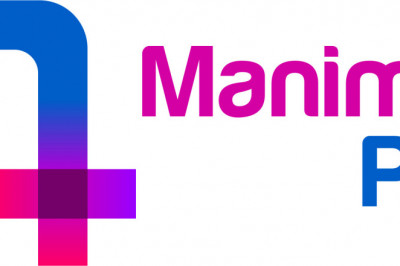views
What Is Hash Rate in Bitcoin Mining?
Bitcoin mining plays a critical role in maintaining the security and functionality of the Bitcoin blockchain. One of the most important terms you'll come across in the world of mining is "hash rate." But what exactly does it mean, and why is it so crucial? If you're new to cryptocurrency, don't worry—we're going to break this down in a simple, beginner-friendly way.
In this article, we’ll explore what hash rate is, why it matters, and how it impacts Bitcoin mining, security, and profitability. Let’s dive in!
What Is Hash Rate?
Definition
At its core, hash rate measures the computational power used in Bitcoin mining. It refers to the number of hash calculations a miner or network can perform per second. In simpler terms, the hash rate shows how quickly miners are trying to solve the cryptographic puzzles needed to add new blocks to the Bitcoin blockchain.
Hash Function
Bitcoin mining relies on a cryptographic function called SHA-256 (Secure Hash Algorithm 256-bit). Miners use this function to process information into a fixed-length "hash." The goal? Find a hash that matches the specific criteria set by the network—essentially guessing a very large number.
Every attempt to solve this puzzle counts as a hash. A higher hash rate means more attempts are being made every second.
Units of Measurement
Hash rate is typically measured in the following units:
-
H/s (Hash per second): The smallest unit, used rarely nowadays.
-
kH/s (Kilohashes per second): Thousands of hashes per second.
-
MH/s (Megahashes per second): Millions of hashes per second.
-
GH/s (Gigahashes per second): Billions of hashes per second.
-
TH/s (Terahashes per second): Trillions of hashes per second.
-
PH/s (Petahashes per second): Quadrillions of hashes per second.
Modern mining operations generally operate in terahashes or even petahashes.
Why Is Hash Rate Important in Bitcoin Mining?
Role in Mining
The hash rate directly impacts how fast miners can solve the cryptographic puzzle. The higher the hash rate, the better a miner’s chances of adding a block to the blockchain and earning Bitcoin rewards. For mining pools and solo miners, a higher hash rate increases the likelihood of successful mining.
Network Security
The hash rate also plays a vital role in the security of the Bitcoin network. A higher overall network hash rate makes it harder for bad actors to execute attacks, like a 51% attack (where a single entity controls more than half the network's mining power). In essence, the hash rate safeguards Bitcoin’s decentralization and integrity.
Mining Efficiency
For individual miners, hash rate helps evaluate the efficiency of their mining equipment. More powerful hardware with higher hash rates will process more calculations, increasing the chances of earning rewards.
Factors Affecting Hash Rate
Mining Hardware
Not all mining equipment is created equal. Here’s how different types stack up:
-
CPUs (Central Processing Units): Rarely used in mining due to low efficiency.
-
GPUs (Graphics Processing Units): A popular choice for altcoin mining but less common for Bitcoin.
-
ASICs (Application-Specific Integrated Circuits): The gold standard for Bitcoin mining. ASICs are purpose-built for high hash rates and outperform CPUs and GPUs by a significant margin.
Energy Consumption
Higher hash rates often mean greater energy consumption, especially with ASIC miners. Electricity costs can significantly impact profitability, making energy-efficient hardware essential.
Network Difficulty
Bitcoin adjusts the mining difficulty roughly every two weeks to ensure that blocks are added approximately every 10 minutes. If more miners join the network and increase the hash rate, the difficulty will rise, requiring even more computational power.
Location and Climate
Geography also plays a role. Miners in cooler regions benefit from natural cooling for their equipment, reducing electricity costs. Additionally, access to affordable electricity can make or break mining profitability.
How to Measure and Track Bitcoin Hash Rate
Real-Time Tracking
Tools and websites like Blockchain.com and CoinWarz provide real-time data on Bitcoin's global hash rate. These platforms help miners and enthusiasts track changes in network activity and overall computational power.
Individual Miner’s Hash Rate
Miners can monitor their own hash rate using software provided by mining hardware manufacturers or third-party solutions like CGMiner or NiceHash. Keeping an eye on this helps identify any issues with equipment performance.
Global Hash Rate Trends
Hash rate trends often reflect market sentiment and mining activity. For instance, hash rates tend to dip during bear markets when mining profitability decreases and rise during bull markets as more miners enter the network.
Impact of Hash Rate on Bitcoin’s Ecosystem
Bitcoin Price Correlation
There’s often a strong correlation between Bitcoin’s price and its hash rate. When prices are high, more miners join the network, increasing the hash rate. Conversely, a lower price can force less efficient miners to shut down operations, reducing the hash rate. For example, tracking trading pairs like BTC/USDT provides valuable insights into Bitcoin's market trends and how they influence mining activity.
Mining Profitability
For miners, a higher hash rate means stiffer competition, but it also indicates a healthy and active network. Profitability depends on balancing hash rate, electricity costs, and Bitcoin's market price.
Environmental Concerns
Bitcoin’s hash rate and energy usage have sparked debates about environmental sustainability. While some criticize mining for its energy consumption, others argue that the industry is increasingly adopting renewable energy solutions.
Future of Bitcoin Hash Rate
Technological Advances
Mining hardware is constantly evolving, with new ASICs offering higher hash rates and better energy efficiency. These advancements could make mining more accessible and environmentally friendly.
Sustainability Efforts
The Bitcoin mining industry is exploring ways to reduce its environmental footprint, such as using surplus energy from renewable sources or stranded natural gas.
Hash Rate Growth Projections
As Bitcoin adoption grows, the global hash rate is expected to rise. This growth reflects the increasing security and decentralization of the network but also means that mining will require more advanced and efficient equipment.
Tips for Beginners Interested in Bitcoin Mining
Choosing the Right Hardware
Start with ASIC miners if you’re serious about Bitcoin mining. Research models that offer the best balance between hash rate and energy efficiency.
Joining a Mining Pool
Mining solo can be tough due to high competition. Joining a mining pool allows you to combine your hash rate with others, increasing your chances of earning rewards.
Staying Updated
Follow hash rate trends and updates in mining technology to stay competitive. Staying informed is key to making smart decisions in this fast-paced industry.
Conclusion
Hash rate is a cornerstone of Bitcoin mining, representing the computational power that drives the network. It impacts security, profitability, and the overall health of the blockchain. Whether you’re a miner or just curious about Bitcoin’s inner workings, understanding hash rate gives you valuable insight into the cryptocurrency world.
As you continue exploring Bitcoin mining, remember that technology and trends evolve rapidly. Stay curious, stay informed, and enjoy the journey into crypto mining!











